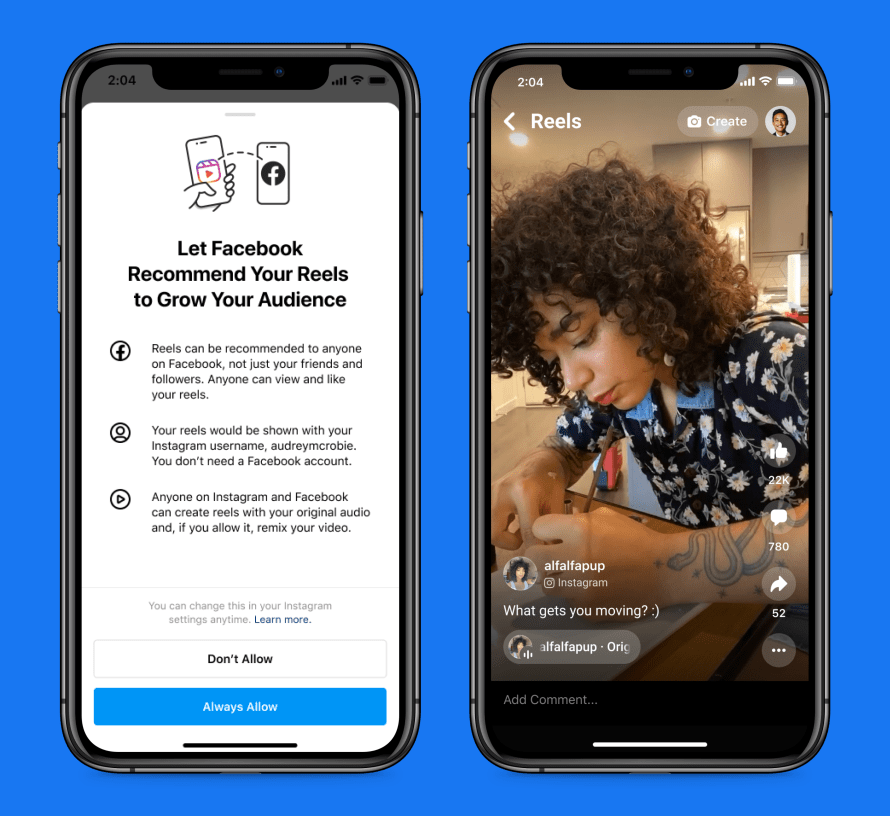The rise of short-form video content on social media platforms has opened up new opportunities for content creators to showcase their talents, connect with audiences, and potentially earn money. Facebook, a pioneer in the realm of social networking, has introduced its own version of short videos called Reels. With the growing popularity of Reels, content creators often wonder about the potential earnings, and ask exactly how much does Facebook Reels pay per 1000 views.
How Much Does Facebook Reels Pay Per 1000 Views?
One of the most common questions content creators have is about how much does Facebook reels pay per 1000 views. While the exact payment structure can vary and is subject to change, Facebook typically follows a CPM (Cost Per Mille) model for compensating creators. The CPM model pays creators a certain amount for every 1000 views their videos receive.
It’s important to note that several factors influence the CPM rate, including the region where the majority of the viewers are located, the content’s engagement rate, the quality of the business page, the niche of the content, and the overall demand for ads on the platform. This is why some creators might earn more while others earn less for the same number of views.
Factors Affecting CPM Rates on Facebook Reels
When delving into the details of how much Facebook Reels pays per 1000 views, it’s crucial to understand the factors that can lead to variations in the CPM rates. These factors play a pivotal role in determining whether a content creator earns closer to the $1 mark or towards the higher end of $5 per 1000 views.
1. Geographic Location
The geographical location of a creator’s audience holds significant influence over their earnings. Advertisers often pay more to target viewers from regions with higher purchasing power and stronger consumer engagement. Thus, creators who collect a large following from such regions might witness a bump in their CPM rates.
2. Content Engagement
Facebook places immense importance on audience engagement. Creators with videos that attract more likes, comments, shares, and longer watch times tend to receive higher CPM rates. Engaging content not only keeps viewers hooked but also signals to advertisers that the content is resonating with the audience.
3. Niche Relevance
The niche in which a creator operates can significantly influence the CPM rates they receive. Content that aligns with a high-demand niche and caters to specific interests might attract advertisers willing to pay a premium for targeted placements. On the flip side, broader or less relevant niches might lead to lower CPM rates.
4. Advertiser Demand
The dynamics of supply and demand in the advertising space can sway CPM rates. If the platform has high demand from advertisers seeking to showcase their products or services, CPM rates could experience an uptick. Conversely, when ad space supply exceeds demand, CPM rates might remain on the lower side.
5. Seasonal Trends
Seasonal trends and events can impact CPM rates. During peak shopping seasons or major holidays, advertisers might allocate larger budgets for campaigns, resulting in higher CPM rates for creators who tap into these trends with relevant content.
The intricate web of factors influencing CPM rates on Facebook Reels transforms what might seem like a straightforward equation into a multifaceted consideration. By understanding these dynamics, creators can position themselves strategically to optimize their earnings and navigate the evolving landscape of short-form video monetization on Facebook Reels.
How Much Does Facebook Reels Pay For 1 Million Views?

Earning from 1 million views on Facebook Reels can be a significant milestone for creators. Using the aforementioned CPM range of $1 to $5, a content creator could potentially earn between $1000 and $5000 for reaching 1 million views. This range highlights the variation in earnings due to the factors mentioned earlier. However, content creators are able to accumulate a collection of Reels by locating and categorizing saved Reels on the Facebook platform.
For instance, if a creator consistently produces engaging content that attracts viewers from high-paying regions and has a strong viewer retention rate, they are more likely to earn closer to the higher end of the CPM range. On the other hand, creators with content that may not be as relevant to advertisers or has lower engagement might earn closer to the lower end of the range.
1. Calculating the Earnings
Utilizing the established CPM range of $1 to $5, creators embarking on the journey toward 1 million views could potentially amass earnings ranging from $1000 to $5000. This broad spectrum underlines the impact of various factors that shape a creator’s earnings, from their content’s appeal to the characteristics of their audience.
2. Game-Changer
Content that sparks engagement is the linchpin of success on Facebook Reels. Creators who manage to keep viewers engrossed, inciting them to like, comment, share, and watch for extended periods, are poised to experience a notable impact on their earnings. Higher engagement often translates into a more attractive proposition for advertisers, leading to potentially higher CPM rates.
3. Leveraging High-Paying Regions
A strategic approach to reaching 1 million views involves capitalizing on regions with higher CPM rates. Creators who cultivate a following in regions where advertisers are willing to invest more for viewer engagement can significantly influence their earnings. Content tailored to these regions’ interests and preferences can enhance the chances of earning closer to the upper limit of the CPM range.
The path to 1 million views on Facebook Reels is an exciting journey laden with potential earnings. The $1000 to $5000 earnings range for this milestone showcases the dynamic nature of content creation and its interaction with variables such as engagement, geographic targeting, and niche selection.
How Much Does Facebook Pay For 10 Million Views?
Accumulating 10 million views is undoubtedly a remarkable achievement for any content creator on Facebook Reels. Using the same CPM range, a creator with 10 million views could potentially earn between $10,000 and $50,000. This significant range underscores the impact of optimization and the type of content created.
Creators who consistently produce viral content, engage viewers, and tap into trending topics are more likely to attract advertisers willing to pay higher rates for ad placements. On the contrary, creators who focus on niche or specialized content might see earnings on the lower end of the spectrum.
1. Viral Content
Creators who consistently generate viral content, striking a chord with viewers and tapping into trending subjects, stand a higher chance of attracting advertisers willing to invest in premium ad placements. This positions them closer to the upper limit of potential earnings for 10 million views.
2. Maximizing Monetization Potential
The journey to 10 million views isn’t solely about achieving an impressive viewership milestone; it’s also about strategically positioning oneself for optimal earnings. Creators who understand their audience, create content that resonates, and maintain relevance with trending topics can unlock the full potential of monetization on Facebook Reels.
The earnings potential for content creators who reach 10 million views on Facebook Reels spans a significant range, highlighting the interplay between content optimization, engagement, and advertiser demand. Whether creators excel in producing viral content or cater to niche audiences, their ability to tap into these dynamics can ultimately determine whether they’re closer to the $10,000 or $50,000 mark.
How Much Does Facebook Pay for Ads on Reels?

In addition to the earnings from views, Facebook Reels also offer the potential for revenue through ads. Just like with YouTube and other social media platforms, Facebook allows creators to monetize their videos by displaying ads within their content. The earnings from ads on Reels are based on the number of impressions (views) the ad receives and the engagement it generates.
Facebook offers different types of ad formats, including in-stream ads that appear within the Reels videos. Advertisers bid for placements, and creators receive a portion of the revenue generated from these ads. However, specific payout rates can vary widely based on factors such as the ad’s relevance, the viewers’ engagement, and the competition among advertisers.
Conclusion
Facebook Reels has opened up a new avenue for content creators to share their creativity and potentially earn money. While the exact earnings per 1000 views and ad revenue can vary due to a multitude of factors, the CPM model provides a general framework for understanding potential earnings.
Creators who consistently produce engaging content, understand their audience, and leverage trends have the potential to maximize their earnings on the platform. As the social media landscape evolves, staying informed about the latest changes in payment structures and strategies for monetization is crucial for content creators looking to succeed on Facebook Reels.

